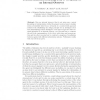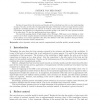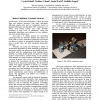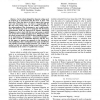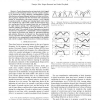1338 search results - page 148 / 268 » Understanding Social Robots |
DAGSTUHL
2003
13 years 11 months ago
2003
How an internal observer, that is not given any a priori knowledge or interpretation of what its sensors receives, learn to imitate seems a formidable issue from a viewpoint of a c...
APIN
2002
13 years 10 months ago
2002
Decades of research into the structure and function of the cerebellum have led to a clear understanding of many of its cells, as well as how learning might take place. Furthermore...
AAAI
2006
13 years 11 months ago
2006
hibition: Extended Abstract Social insects, such as ants and termites, collectively build large and complex structures, with many individuals following simple rules and no centrali...
ICRA
2008
IEEE
14 years 4 months ago
2008
IEEE
— Service robots designed for domestic settings need to navigate in an environment that they have to share with their users. Thus, they have to be able to report their current st...
ICRA
2007
IEEE
14 years 4 months ago
2007
IEEE
— Passive dynamics plays an important role in legged locomotion of the biological systems. The use of passive dynamics is expected for energy efficiency, self-stabilization agai...
